Malaysians are big on food — and they love to introduce their country to visitors through local grub. Indeed, what better way to truly immerse in a country’s culture than to eat your way around?
Thanks to the various ethnic groups that make up the country’s population, Malaysian cuisine is an amalgamation of Malay, Chinese, and Indian flavours. The result is an explosive and colourful food scene that impresses even the most seasoned eater.
Growing up in neighbouring Singapore, I spent my childhood hopping over to Malaysia frequently for inexpensive and ridiculously good food. Whether we were chowing down in simple hawker centres or dining in Imperial restaurants, Malaysian food never failed to satisfy our appetites.
Here are some of my favourite dishes from Malaysia — you have to try them on your next trip to this culinary heaven.

Evening – and dinner hour – take hold in Kuala Lumpur.
Nasi lemak
If Malaysia had a national dish, this would be it. Translated to mean “fatty rice,” nasi lemak is a delicious concoction of fragrant rice with ikan bilis (dried anchovies), a boiled egg, and roasted peanuts. The rice is usually cooked for hours with coconut milk and pandan leaves, creating an amazing fragrance. Nasi lemak is traditionally served wrapped in a banana leaf and topped with a generous serving of sambal belacan (a condiment made with chilies, shrimp paste, and lime juice).
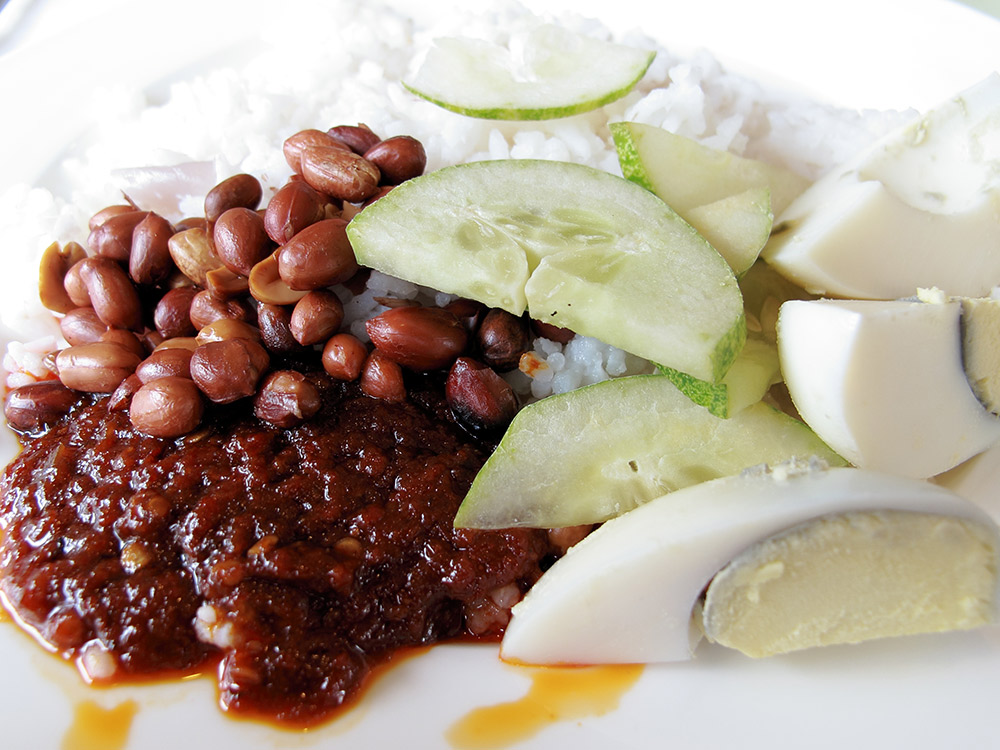
Translated, nasi lemak means "fatty rice." Photo courtesy Stratman.
Assam laksa
Laksa is a thick, piquant broth served with rice noodles and a variety of ingredients and condiments. At first sight, the bubbling, orange liquid can look pretty intimidating (all thanks to hours of boiling in coconut milk, and the red chilies) but trust me, it will surprise you. There are several variations of the dish specific to each region of Malaysia — with the most famous being the Assam laksa from Penang. This distinctive version is acidic and fishy, made sour by tamarind. The dark colour of the broth is punctuated by pink ginger flowers, green chilies, and cucumber slices that add not only colour but also contrasting flavours to the dish.
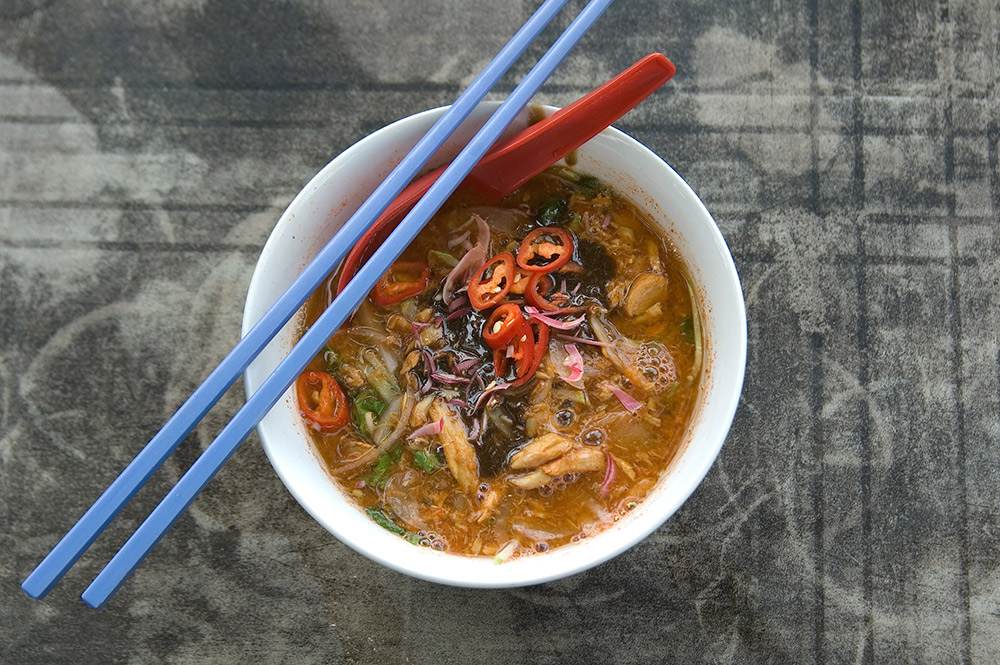
The most famous variation of this dish is Penang's Assam laksa. Photo courtesy Jonathon L.
Hokkien mee
A personal favourite of mine, hokkien mee has its roots from China, but it’s 100 percent Malaysian these days. Thick yellow noodles are braised in a lava-field of dark soy sauce and ingredients like squid, fish-cake, cabbage, and — the star of the show — crispy deep-fried lard. As a popular supper dish, it’s often eaten right along the streets of Kuala Lumpur after a big night out.
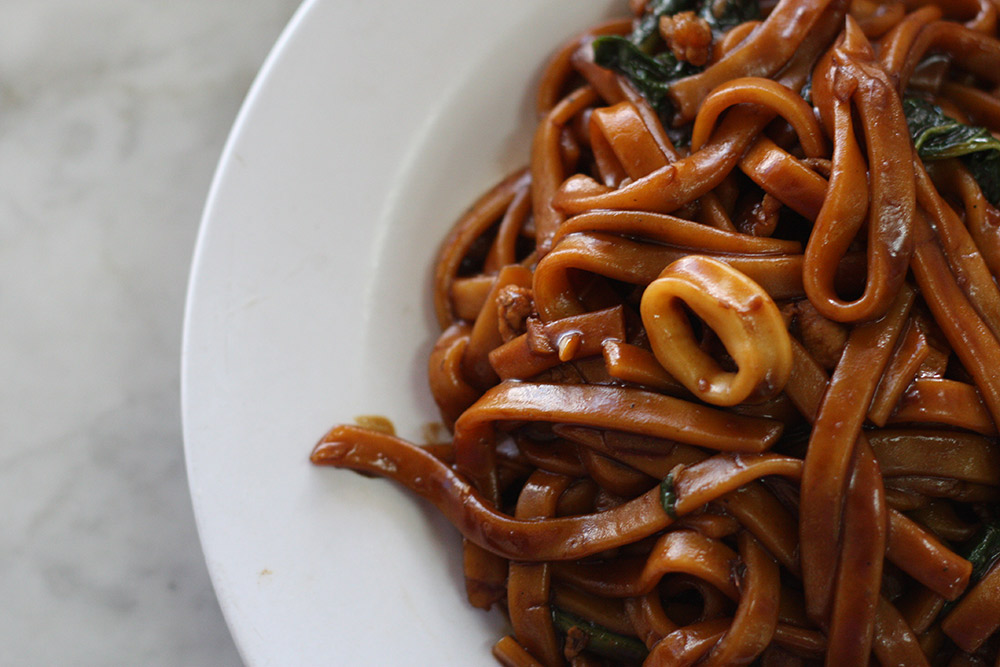
Slurp up these streetside noodles to satisfy your hunger. Photo courtesy Boo L.
Roti canai
Roti canai (pronounced cha-nai) may have been introduced to Malaysia by ethnic Indians, but it’s become one of the most popular Malaysian staples, and deservingly so. Roti canai is a simple flatbread made from flour dough, which is then rolled and flipped about in the air before being heated to golden crispness on a big flat pan. Watching the cook flip the roti canai can be quite a spectacle for a visitor — don’t miss it. The best way to eat it is to tear out chunks of the roti and dip them into yummy dishes like dhal or mutton curry.
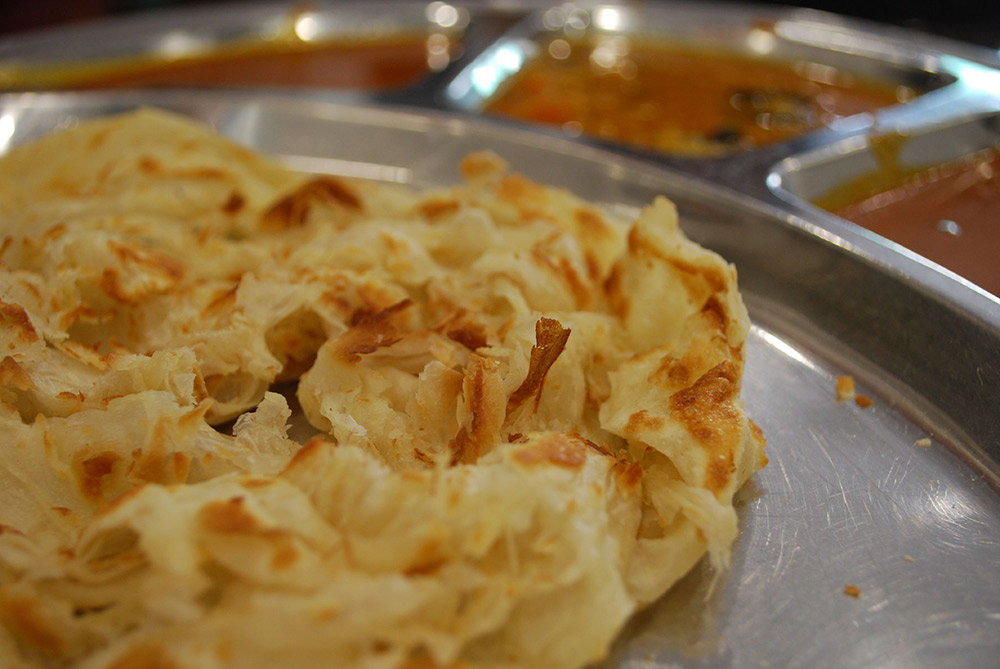
Try and watch the cook flipping the roti canai as its cooking for a real treat. Photo courtesy Alpha.
Satay
This barbecued meat on sticks is probably the most well-known dish from Indonesia and Malaysia. While it sounds simple, making the perfect satay is an art form in Malaysia. It’s about getting that right amount of turmeric when you marinate the meat (giving it the characteristic yellow colour), creating the perfect texture for the spicy peanut sauce that comes with the satay, and producing rice cakes of the right softness.
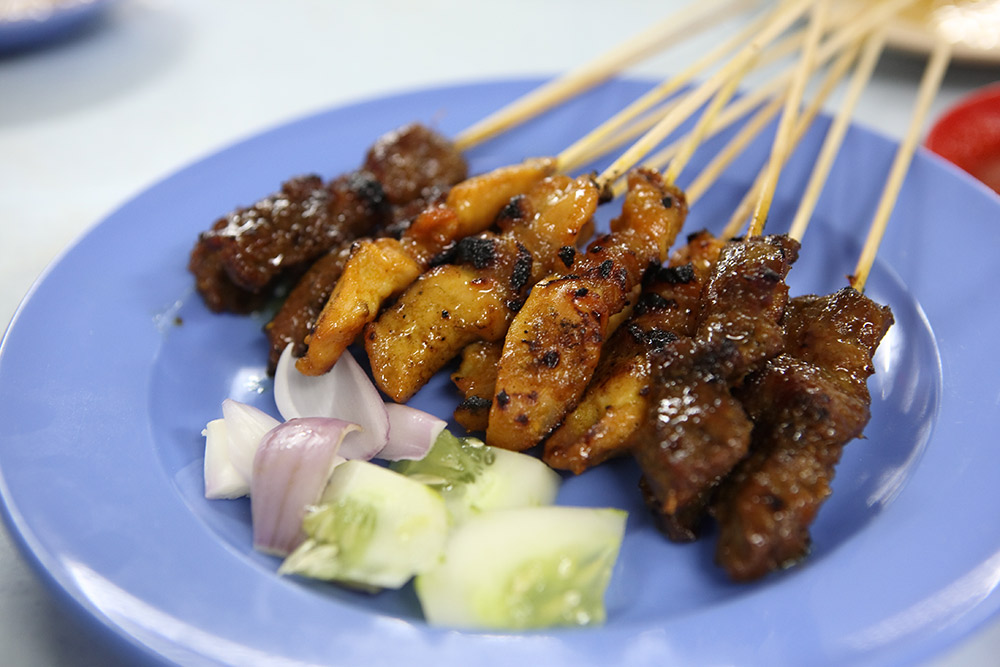
Making the perfect satay is an art form in Malaysia. Photo courtesy Dickson.
Rojak
For those who aren’t adventurous eaters, this dish might not look too appealing. Technically it’s a fruit-and-vegetable salad, but it looks nothing like the green salads that some of us may know. There are several variations, again, but the most common type is made of cucumber, pineapple, bean sprouts, taupok (puffy, deep-fried tofu) and (cut-up Chinese-style fritters) — all stirred together in a black savoury–sweet sauce made of belacan (shrimp paste), sugar, and chili. This local dish is so popular that its name — rojak — is now used as a colloquial expression for an eclectic mix, in particular, to describe the multi-ethnic character of Malaysian society.
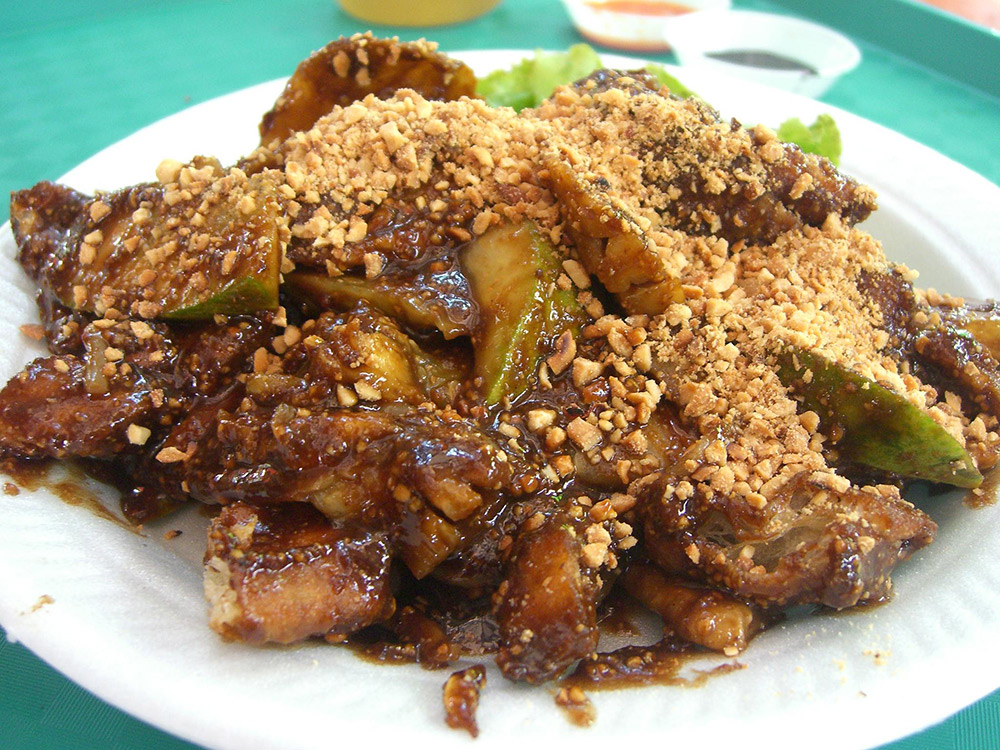
Rojak is not your average, but oh-so-tasty, fruit-and-vegetable salad. Photo courtesy Alpha.
Chendul/Cendol
Chendul refers to a green squiggly jelly made from flour and pandan, a tropical plant found abundantly in Southeast Asia and often used in cooking there. The jelly is mixed with red beans, coconut milk, palm sugar, and syrup, and then topped with a big lump of ice before being drenched in condensed milk. The traditional cold soup-like soup may remind some of you of the Hawaiian shaved ice or Filipino halo halo.
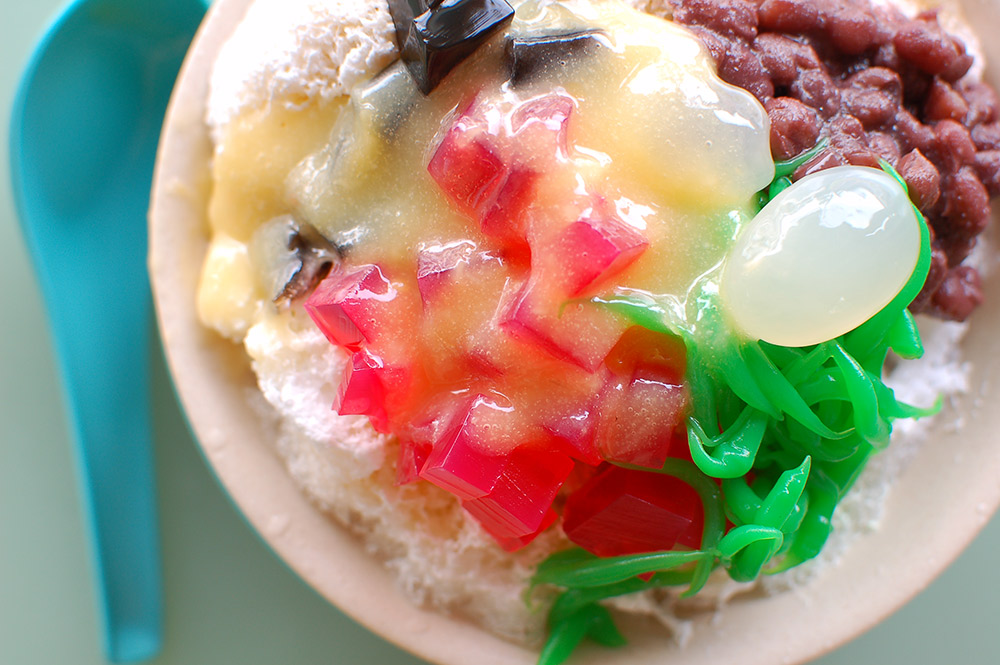
One bite of this sweet treat and you'll be asking for more! Photo courtesy Tiberiu A.
Durian
Known as the King of Fruit in Southeast Asia, durian has to be mentioned in this list, as Malaysia is known to have the best durians in the region. The spiky hard-shelled fruit is most well-known for its strong odour and formidable thorn-covered husk. Some people love the smell of it and describe it as pleasantly fragrant; while others find the aroma overpowering. Ask any Malaysian and they most likely worship durians with ardent fervour.

Durian fruit is often known as the King of Fruit. Photo courtesy Teddy R.
With that, I hope I’ve tickled your taste buds a little and urged you to book your foodie trip to Malaysia.
Getting There
G Adventures runs a number of departures in Malaysia encompassing a wide range of departure dates and activities to cater to different tastes. We’re thrilled at the prospect of showing you this big blue planet of ours — check out our small group trips here.























